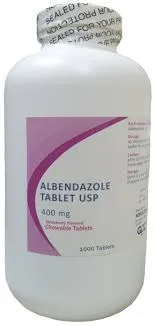- Afrikaans
- Albanian
- Amharic
- Arabic
- Armenian
- Azerbaijani
- Basque
- Belarusian
- Bengali
- Bosnian
- Bulgarian
- Catalan
- Cebuano
- Corsican
- Croatian
- Czech
- Danish
- Dutch
- English
- Esperanto
- Estonian
- Finnish
- French
- Frisian
- Galician
- Georgian
- German
- Greek
- Gujarati
- Haitian Creole
- hausa
- hawaiian
- Hebrew
- Hindi
- Miao
- Hungarian
- Icelandic
- igbo
- Indonesian
- irish
- Italian
- Japanese
- Javanese
- Kannada
- kazakh
- Khmer
- Rwandese
- Korean
- Kurdish
- Kyrgyz
- Lao
- Latin
- Latvian
- Lithuanian
- Luxembourgish
- Macedonian
- Malgashi
- Malay
- Malayalam
- Maltese
- Maori
- Marathi
- Mongolian
- Myanmar
- Nepali
- Norwegian
- Norwegian
- Occitan
- Pashto
- Persian
- Polish
- Portuguese
- Punjabi
- Romanian
- Russian
- Samoan
- Scottish Gaelic
- Serbian
- Sesotho
- Shona
- Sindhi
- Sinhala
- Slovak
- Slovenian
- Somali
- Spanish
- Sundanese
- Swahili
- Swedish
- Tagalog
- Tajik
- Tamil
- Tatar
- Telugu
- Thai
- Turkish
- Turkmen
- Ukrainian
- Urdu
- Uighur
- Uzbek
- Vietnamese
- Welsh
- Bantu
- Yiddish
- Yoruba
- Zulu
Nov . 27, 2024 01:14 Back to list
Antiparasitic Medications for Human Health and Treatment Options
Antiparasitic Drugs for Humans A Comprehensive Overview
Parasites pose a significant threat to human health, causing a range of diseases that can be debilitating, painful, and even life-threatening. These organisms, which can be protozoa, helminths, or ectoparasites, thrive in various environments, often utilizing humans as hosts. To combat these parasites, a variety of antiparasitic drugs have been developed over the years, each targeting specific types of parasites and their life cycles. This article will explore the key antiparasitic drugs available for human use, their mechanisms of action, applications, and the challenges associated with their use.
Overview of Parasitic Infections
Parasitic infections represent a major global health challenge. The World Health Organization estimates that millions of people are infected with parasitic diseases each year, with the most significant burdens found in tropical and subtropical regions. Malaria, caused by Plasmodium species, is one of the most well-known and deadly parasitic diseases, while others like schistosomiasis and lymphatic filariasis also contribute significantly to morbidity and mortality. Ectoparasites, such as lice and scabies, may not always cause systemic disease but can lead to discomfort and secondary infections.
Common Antiparasitic Drugs
1. Chloroquine and Quinine These two drugs are primarily used to treat malaria. Chloroquine disrupts the parasite's ability to detoxify heme, leading to its death. Quinine, an older treatment, also interferes with the parasite's lifecycle but is often used in severe cases or when resistance to chloroquine is suspected.
2. Artemisinin and Its Derivatives Artemisinin-based combination therapies (ACTs) are the frontline treatment for uncomplicated malaria. Derived from the sweet wormwood plant, artemisinin acts quickly against the malaria parasite, especially when combined with other antimalarials to reduce resistance.
3. Metronidazole This antibiotic is effective against protozoan infections like giardiasis and amebiasis. It disrupts the DNA of the parasites, leading to their death. Metronidazole is also used to treat bacterial infections, showcasing its broad-spectrum potential.
antiparasitic drugs for humans

4. Praziquantel Used primarily to treat schistosomiasis and other fluke infections, praziquantel works by increasing the permeability of the parasite’s cell membrane, causing paralysis and eventual death. Its efficacy makes it a cornerstone in the treatment of various helminthic infections.
5. Albendazole and Mebendazole These are widely used anthelmintic drugs for treating worm infections such as ascariasis and hookworm disease. They inhibit the worms' ability to absorb glucose, leading to their starvation and death.
6. Ivermectin Originally developed for veterinary use, ivermectin has been repurposed for humans, showing efficacy against a variety of parasitic infections, including onchocerciasis (river blindness) and lymphatic filariasis. It paralyzes the parasites and is often combined with other drugs for greater efficacy.
Challenges and Resistance
Despite the availability of effective antiparasitic drugs, several challenges hinder successful treatment and control of parasitic diseases. Drug resistance is a growing concern, particularly with malaria treatments such as chloroquine and artemisinin. The rampant use and misuse of these drugs have led to the evolution of resistant strains of parasites, rendering some treatments less effective.
Additionally, access to these drugs remains a critical issue in many regions. Although some antiparasitic medications are available through public health initiatives, economic barriers, inadequate healthcare facilities, and lack of awareness continue to limit access for many infected individuals.
Conclusion
Antiparasitic drugs are a fundamental aspect of global health, playing a crucial role in the prevention and treatment of various parasitic infections. As we continue to confront the challenges posed by these diseases and the growing threat of drug resistance, ongoing research and development are essential. By promoting better access to existing treatments, enhancing surveillance of drug resistance, and investing in new drug development, we can work toward controlling and eventually eliminating the burden of parasitic diseases worldwide. The fight against parasites is ongoing, and continued vigilance is necessary to protect human health on a global scale.
-
Guide to Oxytetracycline Injection
NewsMar.27,2025
-
Guide to Colistin Sulphate
NewsMar.27,2025
-
Gentamicin Sulfate: Uses, Price, And Key Information
NewsMar.27,2025
-
Enrofloxacin Injection: Uses, Price, And Supplier Information
NewsMar.27,2025
-
Dexamethasone Sodium Phosphate Injection: Uses, Price, And Key Information
NewsMar.27,2025
-
Albendazole Tablet: Uses, Dosage, Cost, And Key Information
NewsMar.27,2025













